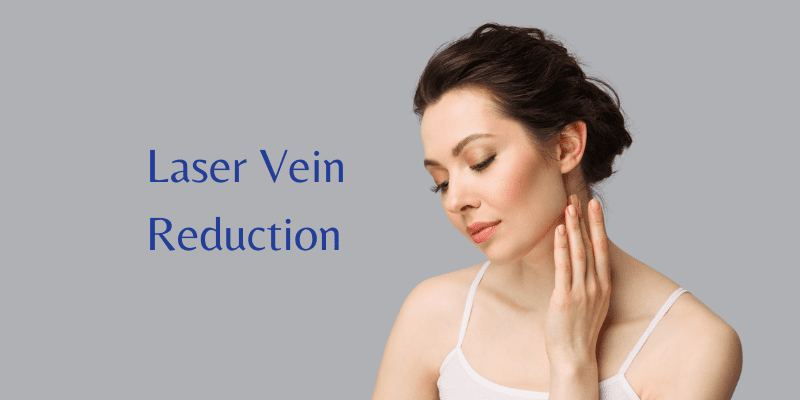Laser Vein Reduction
 While spider veins don’t cause serious health risks in most cases, they can look unappealing or unsightly. Laser vein reduction can get rid of or improve the appearance of those clusters of red, blue, or purple lines, which commonly occur on the face and legs. It can safely and effectively treat broken blood vessels without bruising or blistering.
While spider veins don’t cause serious health risks in most cases, they can look unappealing or unsightly. Laser vein reduction can get rid of or improve the appearance of those clusters of red, blue, or purple lines, which commonly occur on the face and legs. It can safely and effectively treat broken blood vessels without bruising or blistering.
How does it work?
The procedure uses a device that delivers pulses of light energy, which cause the blood within the vein to coagulate. This eventually destroys the vein, which is later reabsorbed by your skin. Then, blood flow will be directed to veins deeper below your skin’s surface, where it should be.
Laser vein reduction systems have a long wavelength and unique design that enable them to treat patients of different skin tones. A consultation with your physician will let you know if laser vein reduction therapy is right for you.
FAQs
What type of veins can be treated?
Laser vein reduction can treat or remove tiny, facial veins or telangiectasia without any complications like bruising. It can also treat spider veins or varicose veins in the legs with good results. A consultation with your doctor will help determine if yours can be treated, as well as find the right course of treatment.
What can you expect after the treatment?
Following the treatment, you can expect some mild redness or bruising in the treated area. When treating larger veins, a brownish pigment can also linger for a few weeks or months after the procedure. Wearing a support hose can help with proper circulation and healing.
How many treatments will I need?
In most cases, one to two treatments are enough. The number of sessions, however, can still depend on the size, colors, and number of the veins being treated. Also, results vary from patient to patient, so it is best to ask your physician about your specific condition.
How soon will I see the results?
Depending on the size, color, and the number of veins to be treated, you can see significant improvements within two to six weeks. Full and final results appear after several months. Touch-up sessions are recommended to maintain the results or treat new veins.
Is the procedure painful?
There may be some stinging sensation from the light pulses, but a topical anesthetic is given before the treatment to improve patient comfort. No local anesthesia or pain medication is usually required.
Are there side effects?
The most commonly noticed side effects are mild redness and local swelling in the treated area. These are usually temporary and subside within 24 hours. Some patients, however, may experience bruising, and in rare cases, blistering. Ask your doctor about the risks of the treatment and make sure to follow all post-care instructions.
Is there downtime?
Generally, patients can go back to most of their routines. It is, however, recommended to avoid strenuous exercise and other vigorous activities 24 hours after the treatment. It is also advisable to limit sun exposure or sunscreen on the treated areas exposed to the sun.
